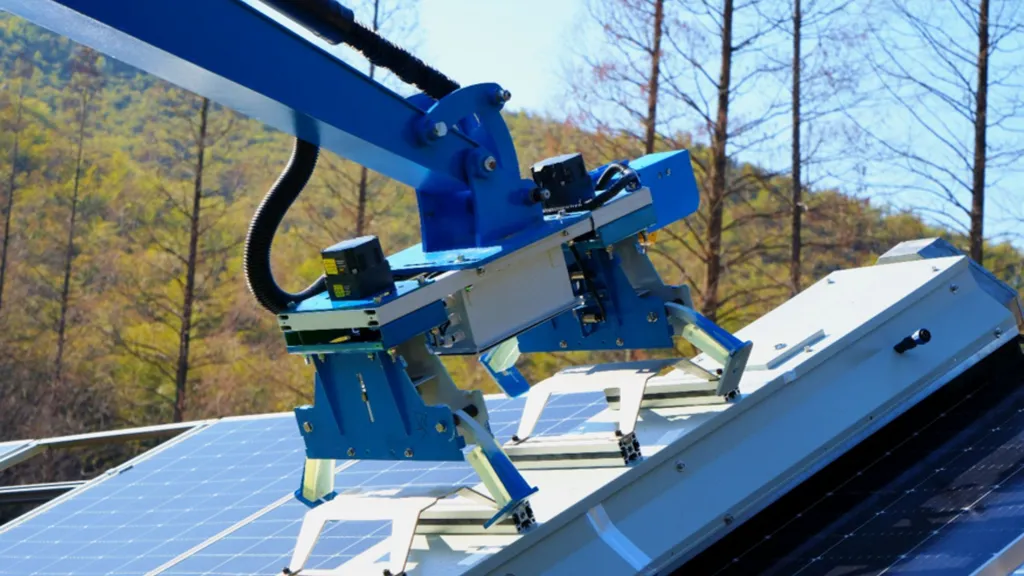In the sun-scorched expanses of China’s Xinjiang region, a new robotic innovator is emerging, promising to revolutionize the way photovoltaic (PV) stations are maintained. Jidong Luo, a researcher from the College of Mechanical and Electrical Engineering at Tarim University in Alar, China, has developed a photovoltaic panel cleaning robot that could significantly boost the efficiency and safety of solar energy production.
The robot, detailed in a recent study published in *Frontiers in Robotics and AI* (which translates to *Frontiers in Robotics and Artificial Intelligence*), addresses a critical challenge in the solar energy sector: the accumulation of dust and dirt on PV panels. “Dirt or dust reduces the effective irradiation of solar energy and weakens the efficiency of converting solar energy into free electrons,” Luo explains. This reduction in efficiency can be substantial, making regular cleaning a necessity for PV stations.
Luo’s robot is equipped with advanced features, including PV detection, path planning, and action control. The heart of the robot’s detection system is an enhanced version of the YOLOv8 (You Only Look Once v8) algorithm, which has been improved using a lightweight Mobile-VIT (Mobile Vision Transformer) model with a Self-Attention mechanism. This enhancement results in an impressive accuracy rate of 91.08% and a processing speed of 215 frames per second, ensuring that the robot can quickly and accurately identify areas that need cleaning.
The robot’s path planning is equally innovative. Luo and his team improved the A* and DWA (Dynamic Window Approach) algorithms, reducing the time consumption from 1.19 seconds to 0.66 seconds and decreasing the number of turns from 23 to 10. This improvement ensures that the robot can navigate the PV arrays efficiently, minimizing the time and energy required for cleaning.
The robot’s performance was evaluated and calibrated in both indoor and outdoor environments. The results were promising, with the cleaning rate increasing by 23% after the robot’s implementation. “The algorithm can successfully clean PV arrays without manual control,” Luo states, highlighting the robot’s potential to reduce the need for human intervention in the cleaning process.
The implications of this research are significant for the energy sector. As the world increasingly turns to renewable energy sources, the efficiency of solar power generation becomes ever more critical. Luo’s robot offers a solution that could enhance the productivity of PV stations, making solar energy a more viable and attractive option for energy providers and consumers alike.
Moreover, the robot’s use of deep learning, computer vision, and advanced navigation algorithms sets a precedent for future developments in the field. As Luo notes, this study serves as a reference for technical applications in these areas, paving the way for further innovations in robotic maintenance and management of renewable energy infrastructure.
In the broader context, this research underscores the potential of robotics and artificial intelligence to transform industries. As the energy sector continues to evolve, the integration of advanced technologies like Luo’s cleaning robot could play a pivotal role in shaping a more sustainable and efficient energy future. The study, published in *Frontiers in Robotics and AI*, not only advances the field of robotic maintenance but also inspires further exploration into the capabilities of AI and robotics in enhancing industrial processes.

